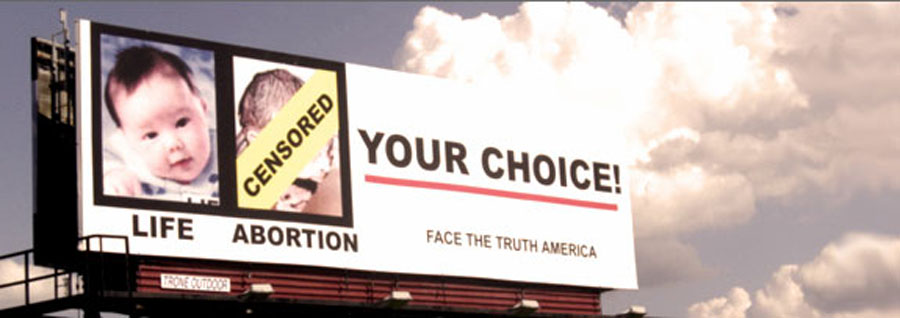
An Introduction to the Visual Discourse of Abortion in America
Lorena Saenz
April 22, 2010
Contact me

Abortion is a visible and relatively accessible place for ordinary Americans to grapple
with the philosophical, moral, humanist, and religious issue of personhood. Medical
technology has contributed significantly to this grappling. In the instance of ultrasound
technology, this medical technology enables the ability to see, feel and interact
with visual images in this debate, that are such a predominant force in western culture.
Communication theorist and professor Celeste Condit states,"Images intensify commitment, motivate the believers to work for the cause, and give
them reason to believe that they can persuade others. When Pro-Life rhetors talk about
why they believe as they do, the role of the photographs
and films becomes quite clear" (80).
Through these images, metonomy is used to equate a fetus with a human. The whole point of these
images used in Pro-Life discourse is to show that a fetus is human life and therefore, another
comparison is set in place: that of abortion being murder. Within this debate,
"The creation of a simple label- The blastoclayst, embryo, fetus, viable baby were reduced to a
single entity through the creation of a single vision fo the "unborn baby". When pictures of
younger fetuses appeared , they were either prominently labeled "baby," surrounded by older
fetuses and by babies, or accompanied by text that attributed ababy-like features to them
(e.g., thumb-sucking, heartbeat, brain activity)
"Even if developing humans at all stages were reduced to a single rhetorical image, the meaning
conveyed by that image would not have been sufficient to support the pro-Life persuasive claim
unless it was also metaphorically interpreted as essentially identical with a full human being.
This layer of meaning was added metaphorically" (83). Other significant visual methodologies at play
in this debate are synechdoche, ideology, institutional apparatus, auteur theory and metaphor, among others.


Through Condit's reasearch of the visual communication in the abortion debate, she states, "pictures do move some uncommitted members of audiences. Certainly, there is a fairly wide range of responses from viewers. Some young people just moan, 'Oh, gross,' and turn away from the images, shutting them out. Others question their authenticity. A few actively deconstruct the images, building a cognitive defense against them? (Condit 80). Because humans are what make up the basis of our society, metonymy allows for viewers, and the American public to recognize a narrative within this debate,
Images may either replace narratives or summarize narratives visually. Like narratives, visual images provide concrete enactments of abstract values and thereby allow a different kind of understanding of the meaning and impact of an ideographic claim about public life. They help 'envision' the material impacts of abstract policy commitments. Images therefore provide a useful form of grounding for the acceptance of an argument. They, like any other form of argument, however, are subject to analysis of the accuracy of the claims they make (Condit 81).
Condit, Celeste. Decoding Abortion Rhetoric: Communicating Social Change . University of Illinois Press: Chicago, 1990.
Google Images
a class taught by Bob Bednar in the Communication Studies Department at Southwestern University